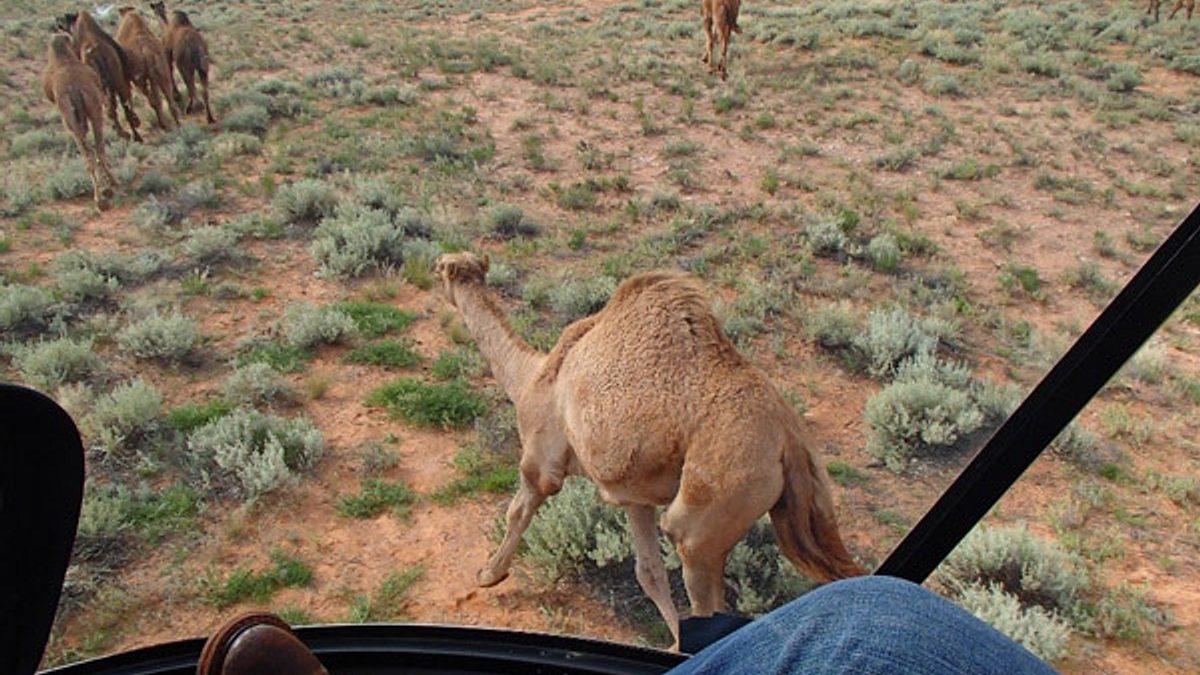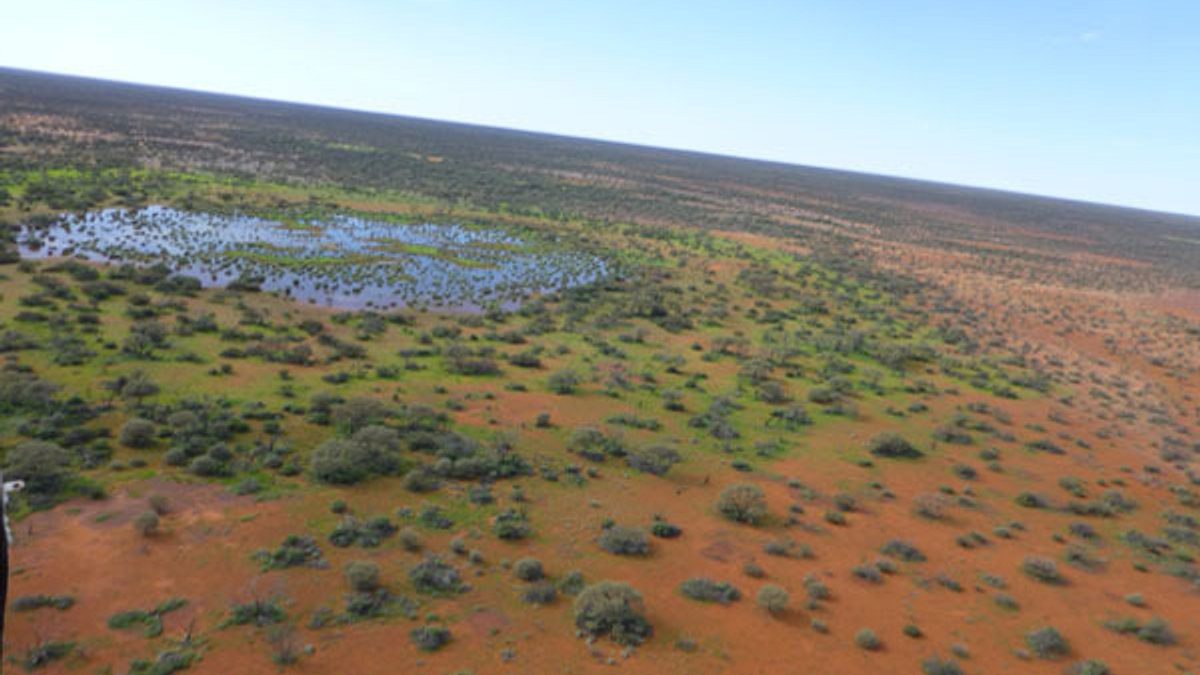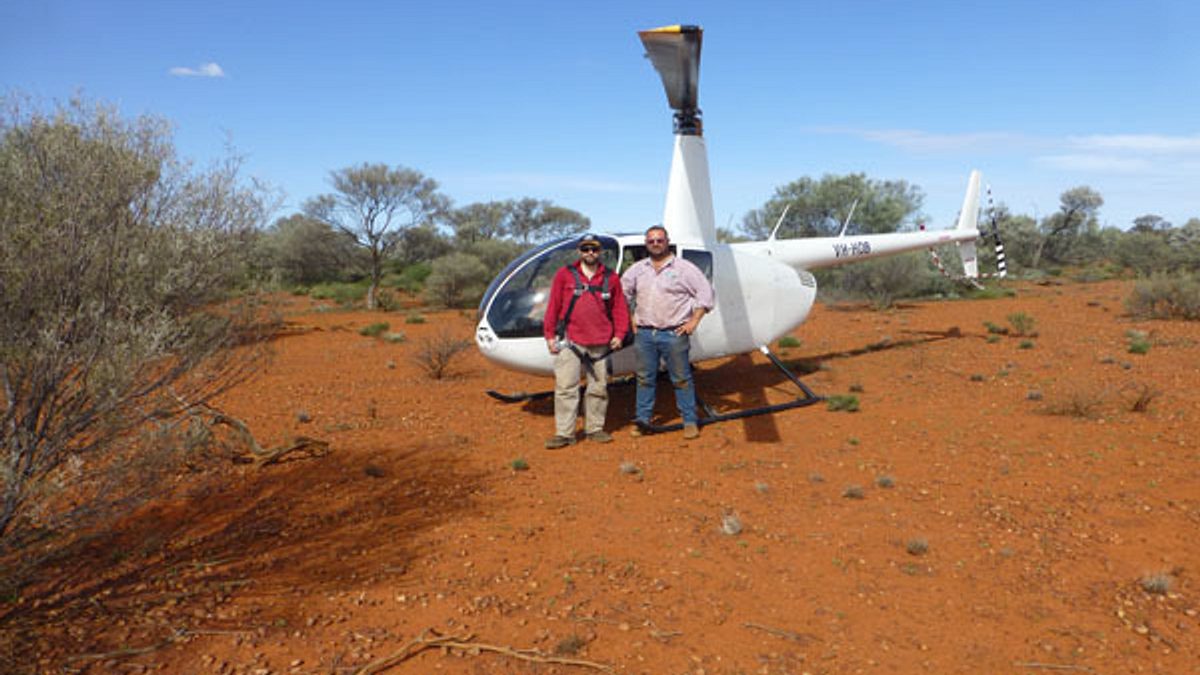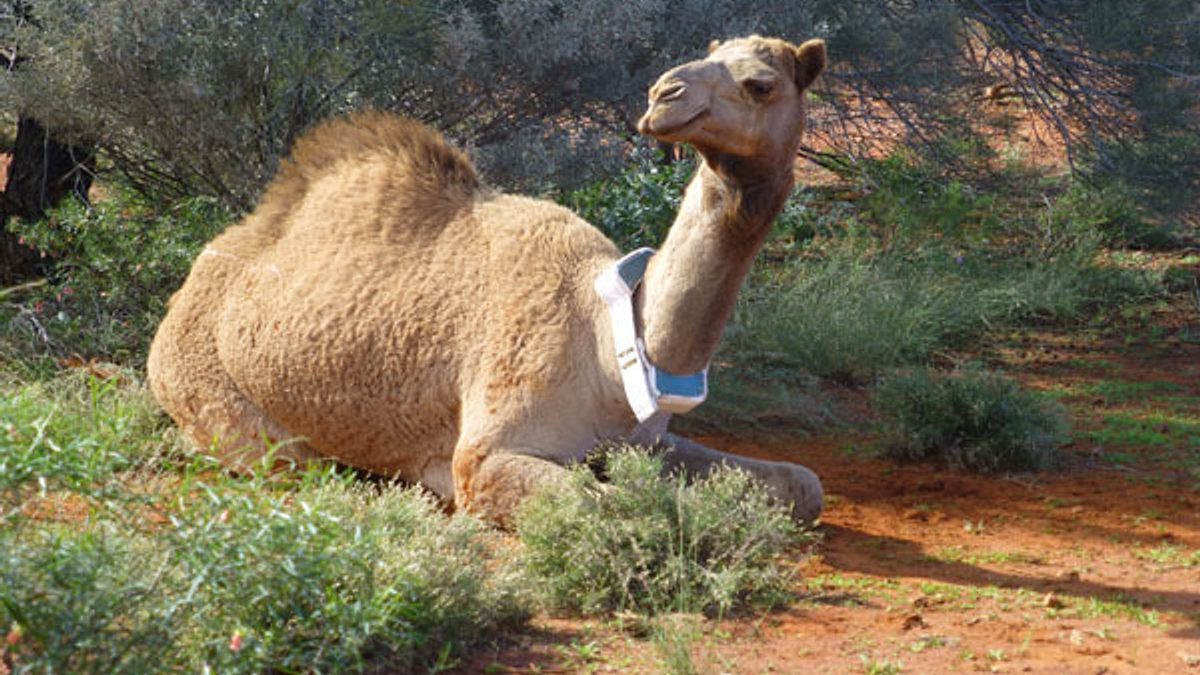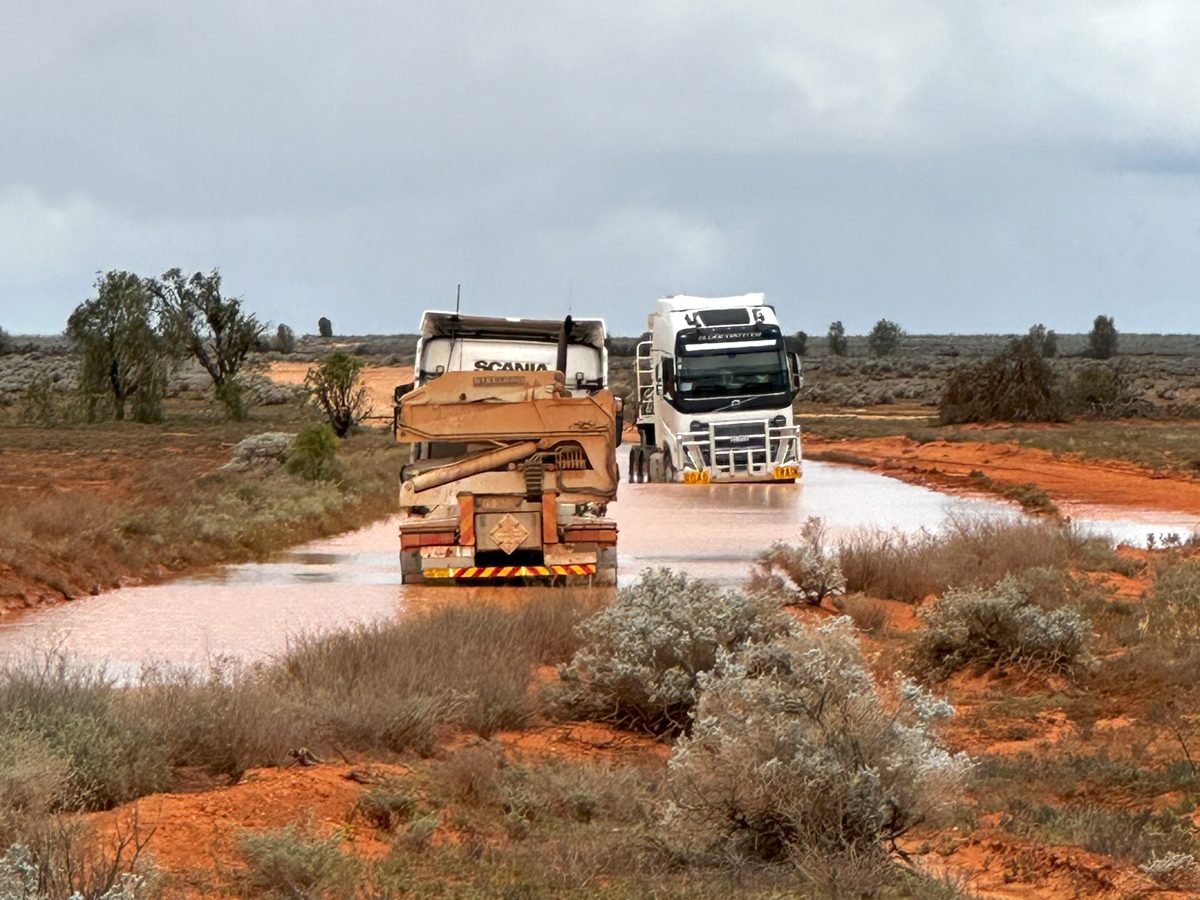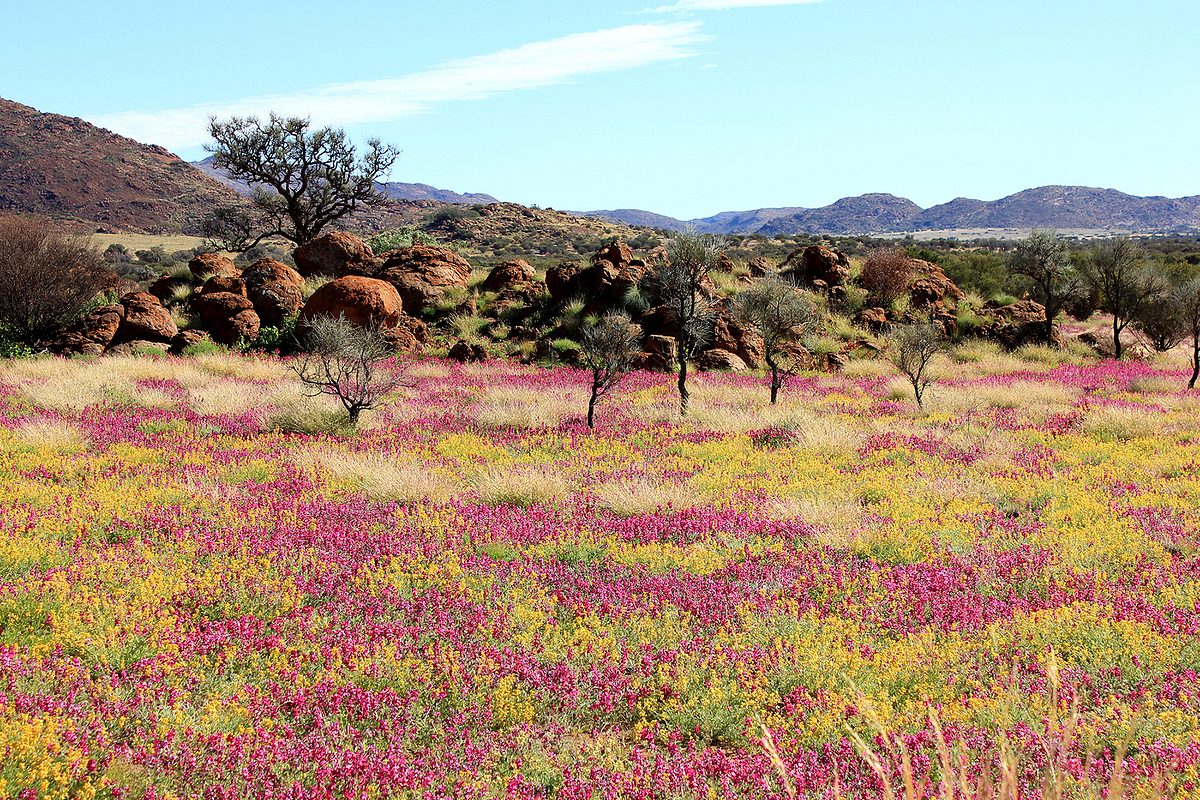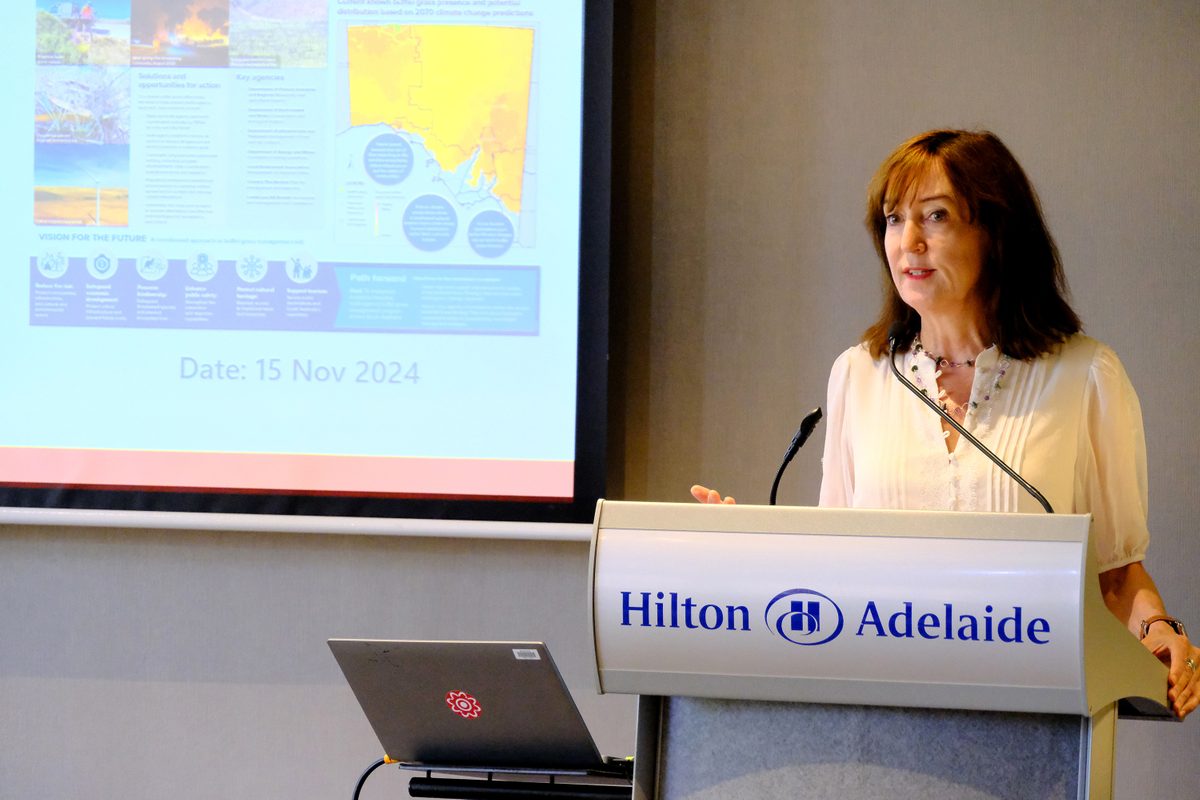New judas camel collars up and running
In May this year, a joint project between the Alinytjara Wilurara Natural Resources Management Board and SA Arid Lands Natural Resources Management Board was undertaken to deploy 12 satellite GPS camel collars (Judas collars) state wide.
07 August 2014
These were additional to the 11 collars previously deployed (and still operational) as part of the Australian Feral Camel Management Project (AFCMP) that concluded in 2013.
The collars provide tracking data that informs future aerial removal programs and on-ground mustering works throughout the region and pastoral areas. The aim of reducing the density of feral camels is to decrease the threat to ecology and biodiversity in remote Australia, to protect culturally significant sites and traditional water supplies and to protect vegetation, and therefore soils, on pastoral lands.
May’s field work was undertaken by Dan Bailey (NR AW), Robbie Sleep from Natural Resources, Eyre Peninsula (NR EP) and veterinarian, Dr Nigel Baun along with helicopter pilot Tim Anderson and his ground support Andrew Bird. Tammy Cox (NR EP) monitored helicopter operations throughout the trip from Ceduna.
A key part of this project was the deployment of satellite GPS camel collars (Judas collars) to track camel movements and behaviours. On the completion of the AFCMP the majority of the collars were retrieved and refurbished with new batteries to give another expected 3 years of monitoring data.
“It is important that we continue to monitor feral camel movements and congregations to enable us to determine the most efficient and effective means to facilitate future culls – particularly in inaccessible areas such as of the Great Victoria Desert, Maralinga Tjarutja Lands, the Nullarbor and the Simpson Desert” said Robbie Sleep.
Dan Bailey, NR AW’s Sustainable Resource Coordinator said “the data from these collars will increase our ability to control and manage feral camel numbers around the State, monitoring the influence of seasonal events on congregations as well as observe Individual behaviours including their home ranges, helping to better understand regional movements of these large feral herbivores.
“Close attention was paid to ensuring that the Standard Operating Procedure (SOP) for aerial-based darting and immobilisation of feral camels was followed so we could safely attach the radio collars without undue stress to the animals” he said.
The trip
Ceduna: After loading trailers and organising the helicopter fuel and camping gear, all vehicles and recovery gear were checked. Fully aware that outside assistance would not be practical if difficulties arose in the remote areas they were travelling to, the team spent the morning running through safety issues and after making final checks before travelling to Oak Valley to camp the night.
The following day they met up with the helicopter crew at Rodena Dam (Maralinga Tjarutja) and ran through further details related to safety and procedures for the deployment of the collars before locating a group of camels and attaching 3 collars, then setting up camp around Vokes Hill Corner.
Next day the team travelled east along the Anne Beadell Highway (an unsealed dirt road), located and collared one camel and camped around Tallaringa Well. Travelling further along the Anne Beadell, another collar was put out before camping the night in Coober Pedy.
After dropping fuel for the helicopter at Oodnadatta the last collar was put out for AW while the ground crew headed to Dalhousie setting up camp at Dalhousie Springs. The next morning the crew drove into the desert and collared one camel 30 miles from Purni Bore before heading back to Dalhousie Springs.
The helicopter then headed to Kalamurina early next morning, ground crew headed back down the Oodnadatta track. At Oodnadatta, the Ceduna based crew headed home while Dan drove on to meet the helicopter at William Creek and pick up the vet. After camping near Quorn that night Nigel was dropped of near Clare before Dan headed back to Adelaide to un-pack.
The Judas Camel Collars deployed and activated in the designated areas around the State are constantly monitored and view using an interactive website. If anybody wants more information regarding movements and maps please don’t hesitate to contact Dan Bailey on the number provided below.
Aside from the additional data the collars will help provide for monitoring camel congregation events and seasonal movement patterns the project also formed a positive and successful partnership, between the three Natural Resources regional groups involved, working with various indigenous boards, local landholders and traditional owners, with all parties eager to continue to work together on this project into the future.
For further information please contact Natural Resources Alinytjara Wiluṟara's Dan Bailey on (08) 8463 4864.
